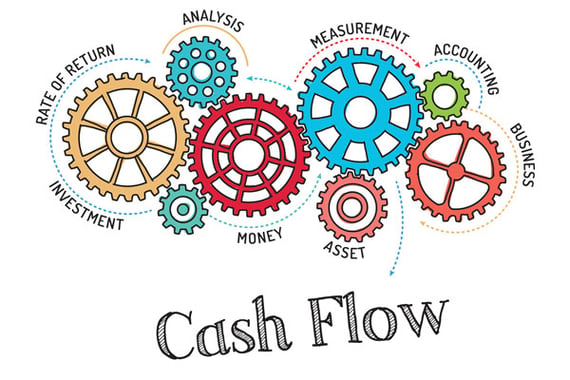
Many small businesses walk a tightrope between accounts receivable and accounts payable. It is a constant challenge to get customer invoices paid sooner, while paying suppliers and other expenses at the last possible moment. When your accounts are running like clockwork, you can maximize your use of cash to grow your business. However, even the most carefully managed finances can hit a snag. If you run into a cash flow crisis and are struggling to pay your bills, these best practices will ensure that your business remains intact.
Be Prepared With Updated Financial Statements
Whether you have internal accounting professionals or you use outsourced bookkeeping services, insist on regularly updated financial statements. The statement of cash flows and the income statement are most important for keeping an eye on how money is moving through your organization.
Though you won’t be able to prevent every cash flow crisis, the more carefully you watch your statements, the more warning you will have to an impending issue. Greater lead time gives you a wider variety of options to manage the situation.
Consider Your Borrowing Options
Ideally, you should open a line of credit while all of your financials look good, as this is the best time to get approved. If this didn’t happen in advance of a cash crunch, explore your options. Your current financial services provider may be able to offer you a short-term loan or a revolving line of credit if you secure it with business assets. If not, look into borrowing opportunities with other lenders. For example, some lenders might be willing to extend credit in order to attract your business. Others, such as credit unions, use different credit approval criteria than commercial banks.
Speed Up Customer Payments
If you have made customer relationships a priority throughout your time in business, you may have a ready source of cash during lean periods. Contact customers that you have a strong history with and request that invoice payments be made as soon as possible. If you can, offer a discount to go along with your request. For example, instead of the standard 2 percent for payment in 10 days, increase the discount to 4 percent for payment in five days.
This is also a good time to look at outstanding invoices. If any significant receivables are overdue, increase your collections activity. Consider accepting credit card payments, if you don’t already, so that you can charge the card immediately once the customer gives you the go-ahead.
Shave Expenses
While you don’t want to alarm employees and customers with dramatic cost-cutting measures, you can achieve significant savings in a short period with a few creative tweaks. For example, have a look at your energy consumption. You might be paying for heat, air conditioning, computers and printers when no one is using them. Examine employee expense accounts. Perhaps you can put a moratorium on expensive travel and entertainment, opting instead for video conferencing.
Of course, no discussion of expense reduction is complete without examining payroll. You may have to consider layoffs, but leave this as a last resort. Often, the savings after severance payments and other related expenses is much lower than you expect, and in the meantime, you have damaged the confidence and engagement of your remaining staff members.
Instead, consider payroll reduction alternatives. Reducing hours across the board, for example from 40 to 32, will ensure that the pay cut is manageable for most of your workers while still keeping them employed. You can institute strict policies against overtime or offer unpaid sabbaticals to volunteers who want a little time off. Some forward-thinking managers get the entire team together to explain the issue and brainstorm solutions.
Sell Non-Critical Assets
If you have duplicate equipment or you overspent on assets you aren’t using at full capacity, now is the time to sell. For example, you can consider unloading company cars, opting instead for less travel-intensive sales techniques. Perhaps you can consolidate operations to take up less space, then lease or sell the newly available real estate. The key is to get creative and rework your processes to cash in and solve your financial problems.
Negotiate With Vendors
Strong vendor and supplier relationships are useful when cash is in short supply. Try contacting the ones that you believe will be receptive and renegotiate the terms of your contract. More time to pay is an obvious first choice, but there are other possible steps suppliers can take to ease the payment crunch for you. For example, they may be willing to discount current bills in exchange for a long-term purchasing commitment.
If it becomes clear that some bills will go unpaid, be strategic in which checks you write. For example, the legal ramifications of skipping payroll are serious, and your business won’t recover from a loss of key employees.
The most important thing to remember is that ignoring the problem is the worst of all possible options. This sort of behavior damages trust, and creditors who might otherwise have been willing to work with you will instead press for full, immediate payment of debts. The sooner you get a handle on the full extent of the problem and begin brainstorming possible solutions, the more likely you are to survive the crisis with your business intact.
Need help managing your cash flow projections? Our team of accounting professionals can help.














